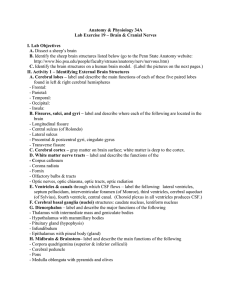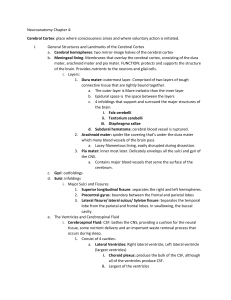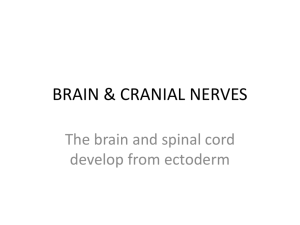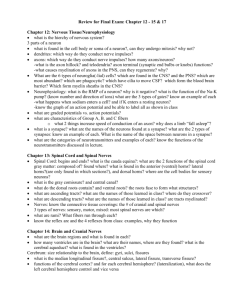Lab 14 Brain
advertisement
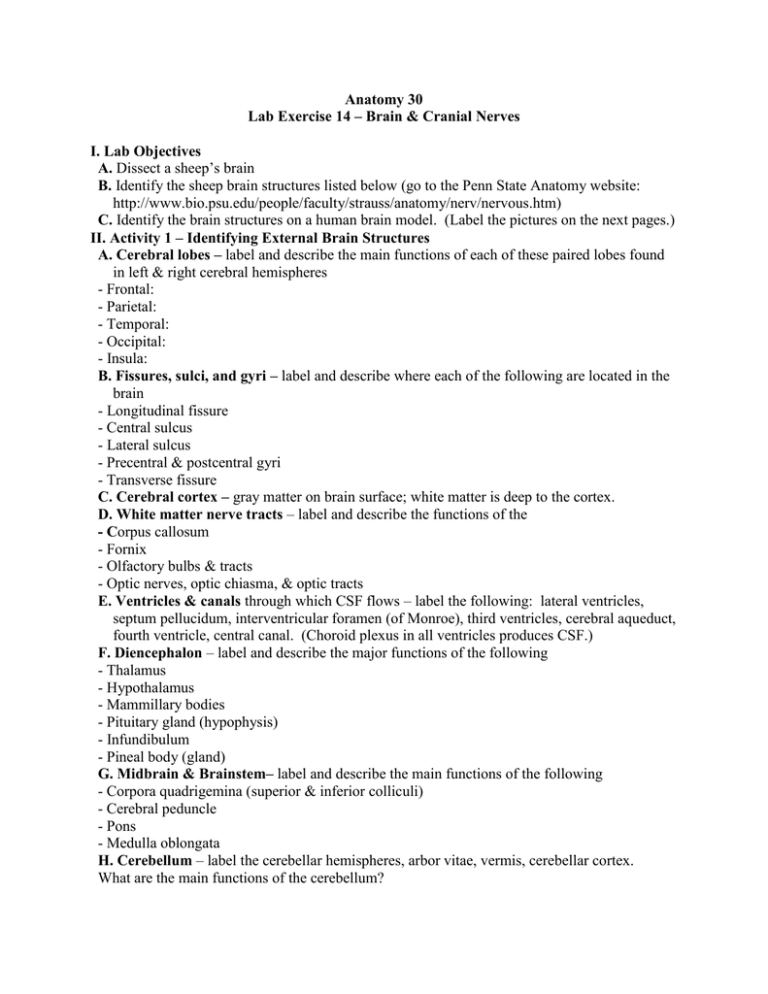
Anatomy 30 Lab Exercise 14 – Brain & Cranial Nerves I. Lab Objectives A. Dissect a sheep’s brain B. Identify the sheep brain structures listed below (go to the Penn State Anatomy website: http://www.bio.psu.edu/people/faculty/strauss/anatomy/nerv/nervous.htm) C. Identify the brain structures on a human brain model. (Label the pictures on the next pages.) II. Activity 1 – Identifying External Brain Structures A. Cerebral lobes – label and describe the main functions of each of these paired lobes found in left & right cerebral hemispheres - Frontal: - Parietal: - Temporal: - Occipital: - Insula: B. Fissures, sulci, and gyri – label and describe where each of the following are located in the brain - Longitudinal fissure - Central sulcus - Lateral sulcus - Precentral & postcentral gyri - Transverse fissure C. Cerebral cortex – gray matter on brain surface; white matter is deep to the cortex. D. White matter nerve tracts – label and describe the functions of the - Corpus callosum - Fornix - Olfactory bulbs & tracts - Optic nerves, optic chiasma, & optic tracts E. Ventricles & canals through which CSF flows – label the following: lateral ventricles, septum pellucidum, interventricular foramen (of Monroe), third ventricles, cerebral aqueduct, fourth ventricle, central canal. (Choroid plexus in all ventricles produces CSF.) F. Diencephalon – label and describe the major functions of the following - Thalamus - Hypothalamus - Mammillary bodies - Pituitary gland (hypophysis) - Infundibulum - Pineal body (gland) G. Midbrain & Brainstem– label and describe the main functions of the following - Corpora quadrigemina (superior & inferior colliculi) - Cerebral peduncle - Pons - Medulla oblongata H. Cerebellum – label the cerebellar hemispheres, arbor vitae, vermis, cerebellar cortex. What are the main functions of the cerebellum? Midsagittal brain section Left, lateral brain Inferior Brain Brain Ventricles Model Lab Manual Assignment: Complete the Lab 14 Review Sheets on pp. 175-179. III. Cranial Nerves – describe where each is located, and their main functions. 1. Olfactory 2. Optic 3. Oculomotor 4. Trochlear 5. Trigeminal 6. Abducens 7. Facial 8. Vestibulocochlear (Acoustic) 9. Glossopharyngeal 10. Vagus 11. Accessory 12. Hypoglossal
